
There’s no doubt that Bardeen has a great user experience, but we have found several reasons why you might want to ditch it for more modern solutions.
Since finding the best Bardeen alternatives is time-consuming, our team has come up with the 10 best alternatives to automate workflows and scrape data.
In this article, we break down Bardeen’s limitations and offer you alternative software to consider for your business, such as Relay.app, Qntrl, Workato, Cheat Layer, Make, and more.
Why Do You Need a Bardeen Alternative In the First Place?
Bardeen is expensive, doesn’t let you work in teams, and can’t run in the background. These are just a few reasons users want to switch to new solutions.
Let’s look at the top 3 reasons that we’ve heard from customers looking for Bardeen alternatives ⤵️
Reason 1. Can’t Work in Background
Since Bardeen is a Chrome Extension, it can only automate workflows while your computer and browser are active.
Products like Zapier, Make, and Relay.app are all cloud-based automation platforms that work whether you’re at your computer or not.
Reason 2. Some Features Take Time to Execute
Some of Bardeen’s features can force you to take manual actions, while all the alternatives listed below would’ve taken care of it.
For example, when scraping information, you have to go over to “results” to check if all fields have been scrapped. If they haven’t, which happens often with Bardeen, you’re responsible for adding or changing the data.
In rare cases, Bardeen skips fields that you then spend time adding back.
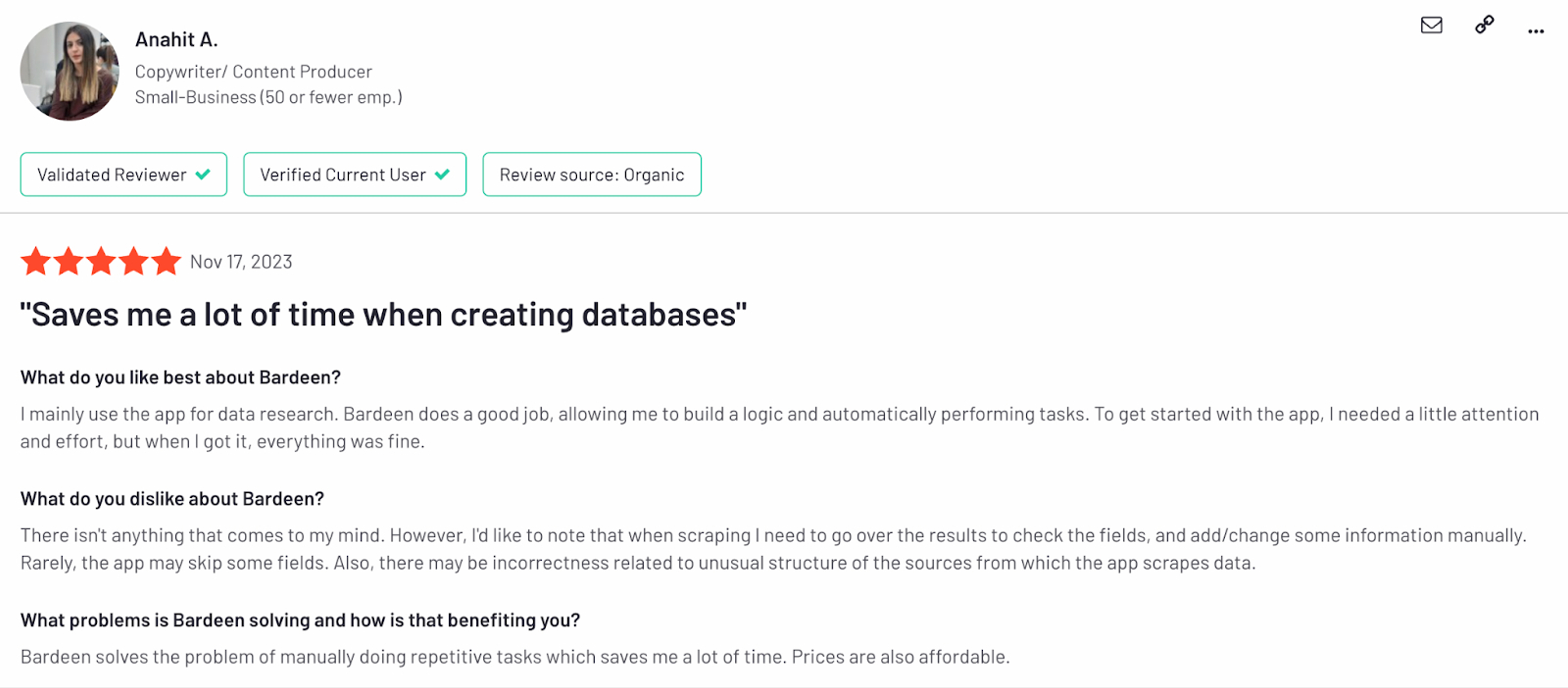
Reason 3. No “Human-in-the-loop” Automation
Bardeen doesn’t support “Human in the Loop” automation.
You can only create fully automated workflows in Bardeen. If let’s say, you need human approval or data input in the middle of a process, picking a Bardeen alternative is your only option.
What are the Best Bardeen Alternatives & Competitors?
Some of the best alternatives to Bardeen are:
- Relay.app – Keep humans in the workflow automation loop.
- Qntrl – Helps businesses gain control over their workflows.
- Workato – Boost overall workflow efficiency.
- Cheat Layer – Helps you solve tough business automation problems.
- Make – A workflow and tasks management no-code platform.
- PixieBrix – Adds automation, integrations, collaboration, and AI to web apps.
- Integrately – Saves businesses time and money by automating repetitive tasks.
- Kissflow – A low-code platform that automates workflows for multiple personas.
- Rindle – A workflow management platform designed for busy managers and teams.
- Cflow – A no-code workflow automation tool.
1. Relay.app
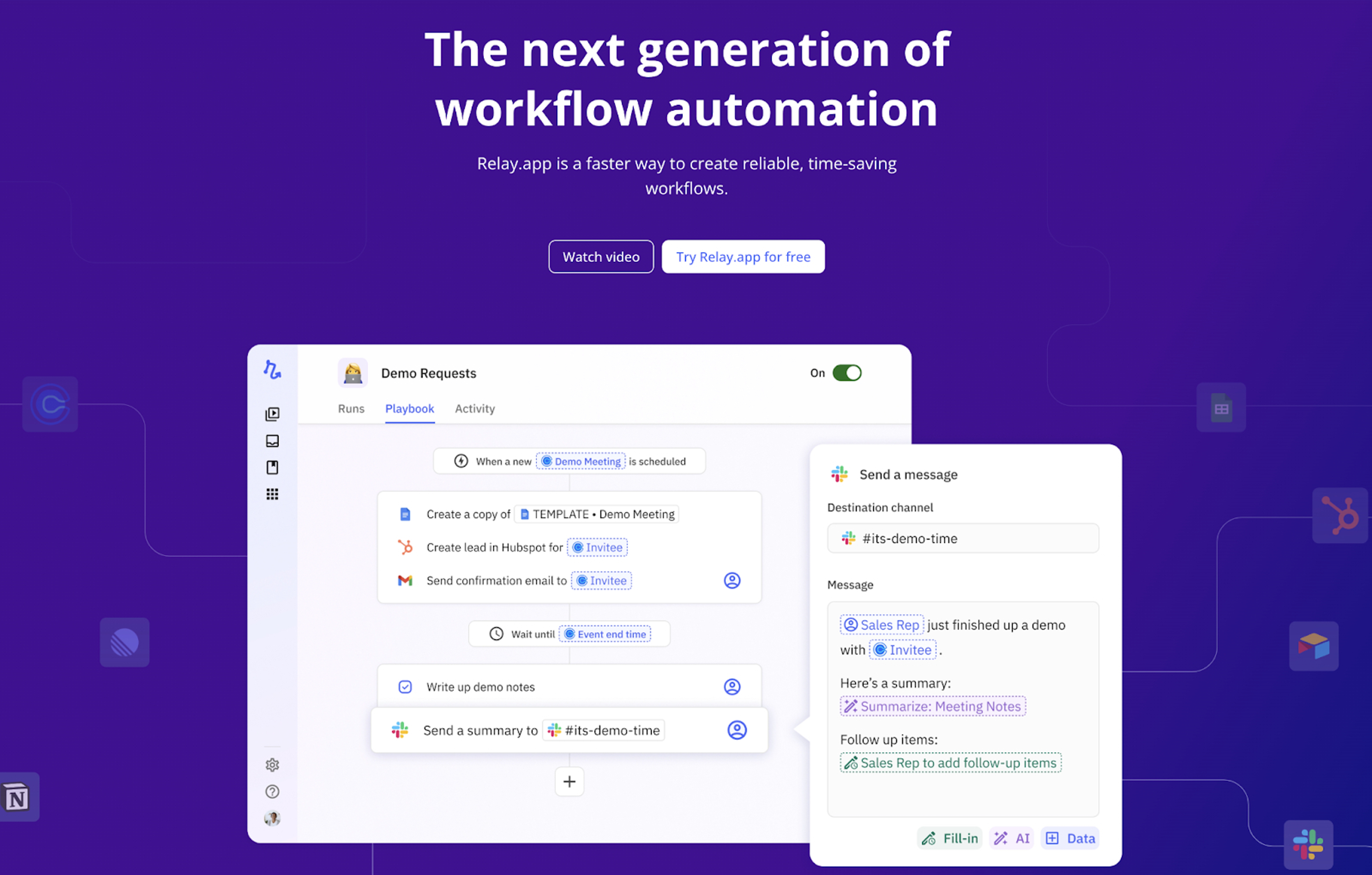
Relay.app is a faster way to create reliable, time-saving workflows. The tool’s becoming a go-to choice for teams because of features like human-in-the-loop, multiplayer, and 1-click automation AI.
The best part?
You don’t need any coding or workflow automation knowledge to use Relay.app. Just create an account and get started.
Feature 1. Human In The Loop
When running workflow automation, you often require input or decision-making from someone on your team before a given automation continues.
Human in the loop automation lets you add human steps to your company’s workflows. This way, as soon as human input is needed, the automation will pause, send a notification to the person in charge, and only continue after the task has been completed.
You then get the best of both worlds:
✅ Efficiencies and time savings of an automated process.
✅ The personalization and precision of a human-based process.
There are four main Human in the Loop features:
- Approvals: In a deal-closing workflow, a manager approves once a contract has been automatically created. When approved, the workflow sends the customer a Docusign and waits for it to be completed.
- Manual data inputs: In a customer onboarding workflow, the Account Executive (AE) for a closed deal is asked to provide a link to the deal’s summary notes, which will then be automatically shared with the Customer Success Manager (CSM).
- Human decisions: When a new customer support email arrives in a shared inbox, a support team member is notified to decide whether the incoming email is about a complaint or a support request. Depending on the team member's decision, either an email will be sent to the customer, or a support ticket will be created in Zendesk.
- Blocking manual tasks: In a sales closing workflow, after a deal is closed according to a CRM update, a task is assigned to the Sales Manager to create a contract draft. Once the contract is drafted by the manager, the workflow continues, and shares the document with the other parties' Legal Counsel for review.
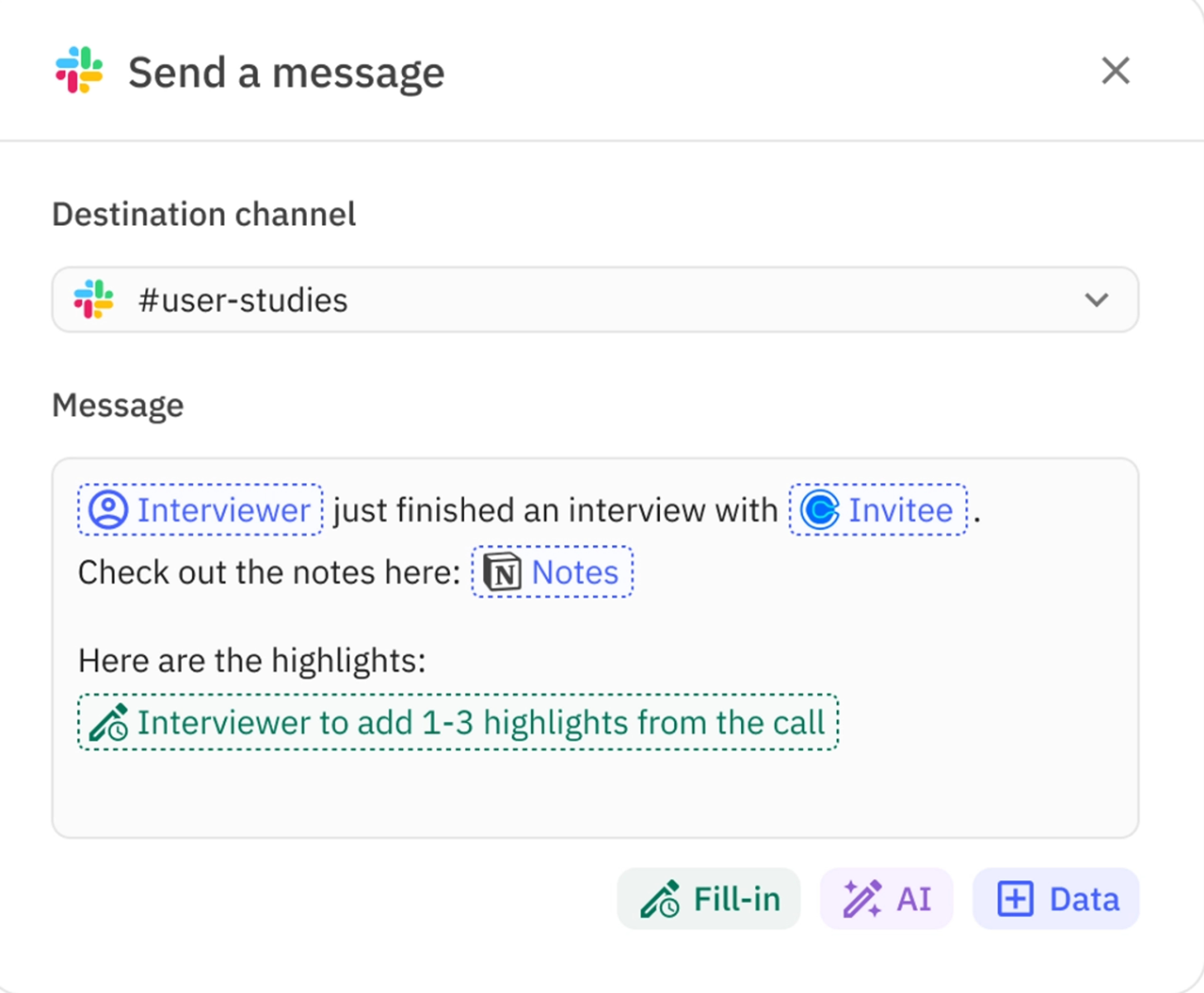
👇 See how the human in the loop feature can unlock new automations for you
Why Having a Human in the Loop is Important?
Although some could argue that humans in the loop can slow workflows, it’s crucial for processes like:
- Personalizing semi-automated emails as part of customer onboarding/churn/feedback workflows.
- Human triage of incoming user feedback before automatically filing bugs in Jira/Linear.
- Manually assign CSM within the team to a newly acquired customer by the customer success leader whenever a new deal is closed.
AI can’t do that for you, and not adding a human layer will speed up workflows but slow down entire processes.
Let’s take an example to understand the concept better 👇
Suppose you send churn emails to customers who opt out of your paid product.
Without humans involved, everyone will receive the same churn email with basic personalization.
Response rate? Likely very low…
With Relay.app, you can fire notifications as soon as the workflow starts, requesting that someone from the customer support team add context to the email.
Result? More feedback and retention from customers!
Feature 2. 1-Click AI Assistance
Integrating AI with Relay.app is quick and easy. Unlike other workflow automation tools, you don’t have to write prompts to add AI to your workflows.
Relay.app already has pre-built and in-context AI tools embedded in the automation.
For example, you can use AI Autofill to suggest paragraphs for emails and summarize content from a Notion page. Or use AI Classify to intuitively guide your automation through conditional logic pathways.
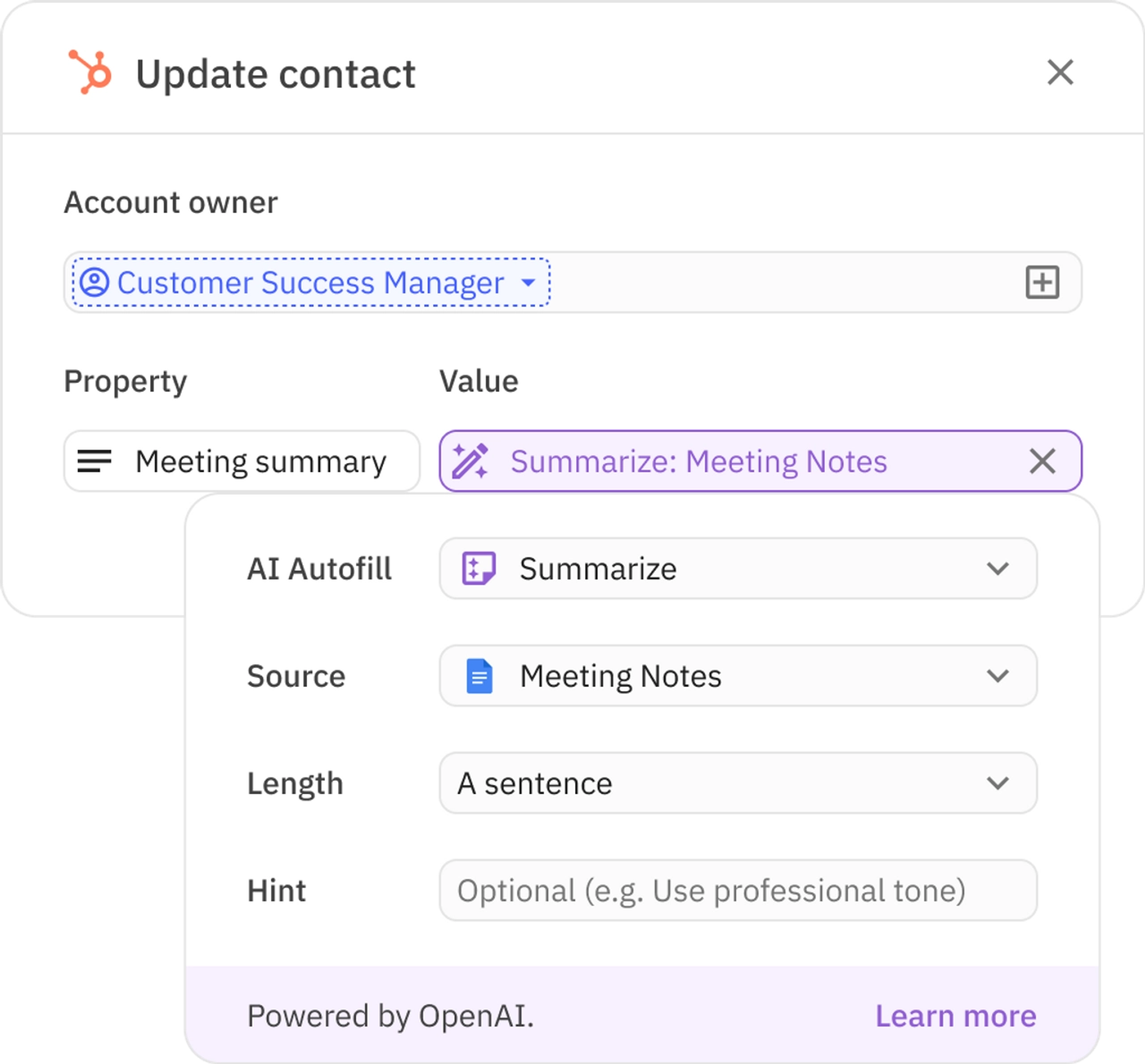
👇 Check out the interactive demo to see how our 1-Click AI Assitance works
Feature 3. Support Collaborative Workflows
Most workflow tools are managed in silos. Relay.app promotes teamwork by letting you build playbooks alone or with your team.
Delegate tasks to your team via dynamic role assignments. ⤵️
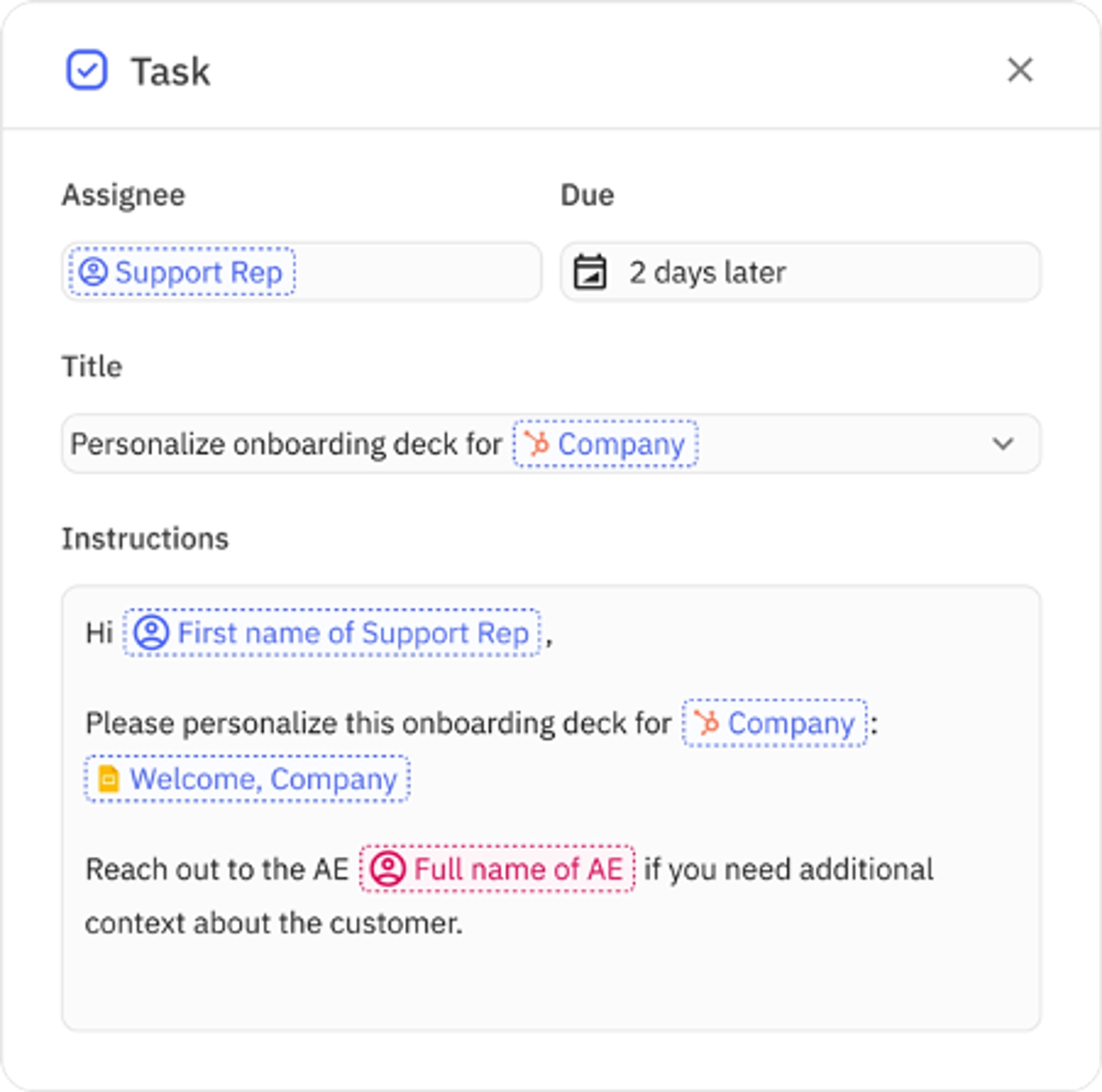
Relay.app Integrations
Relay.app currently integrates with many applications, such as Airtable, Google Workspace, Lemlist, etc.
Most importantly, Relay.app makes it easy and seamless to deploy integrations and support workflows after they’re published.
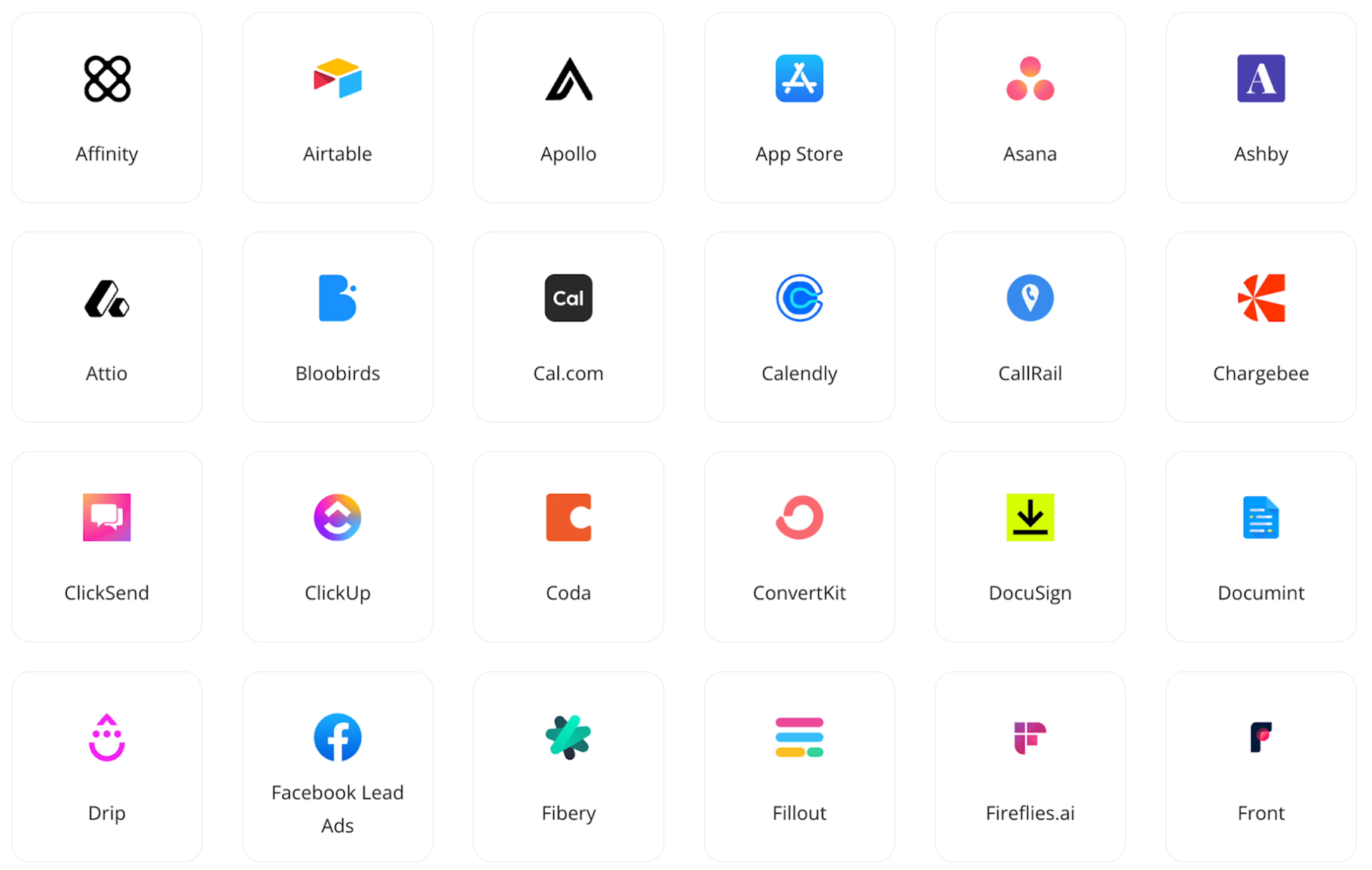
Pricing
Relay.app’s free plan lets you do 100 free runs and gives you access to all features.
👀 Note: Unlike other automation tools, you get unlimited usage with any of Relay.app’s plans!
Need to onboard your team and increase the number of runs? Choose from three paid plans:
- Starter: $18 per month (for up to 2 users)
- Team: Starting at $27 per month ($9 per seat)
- Enterprise: Custom pricing
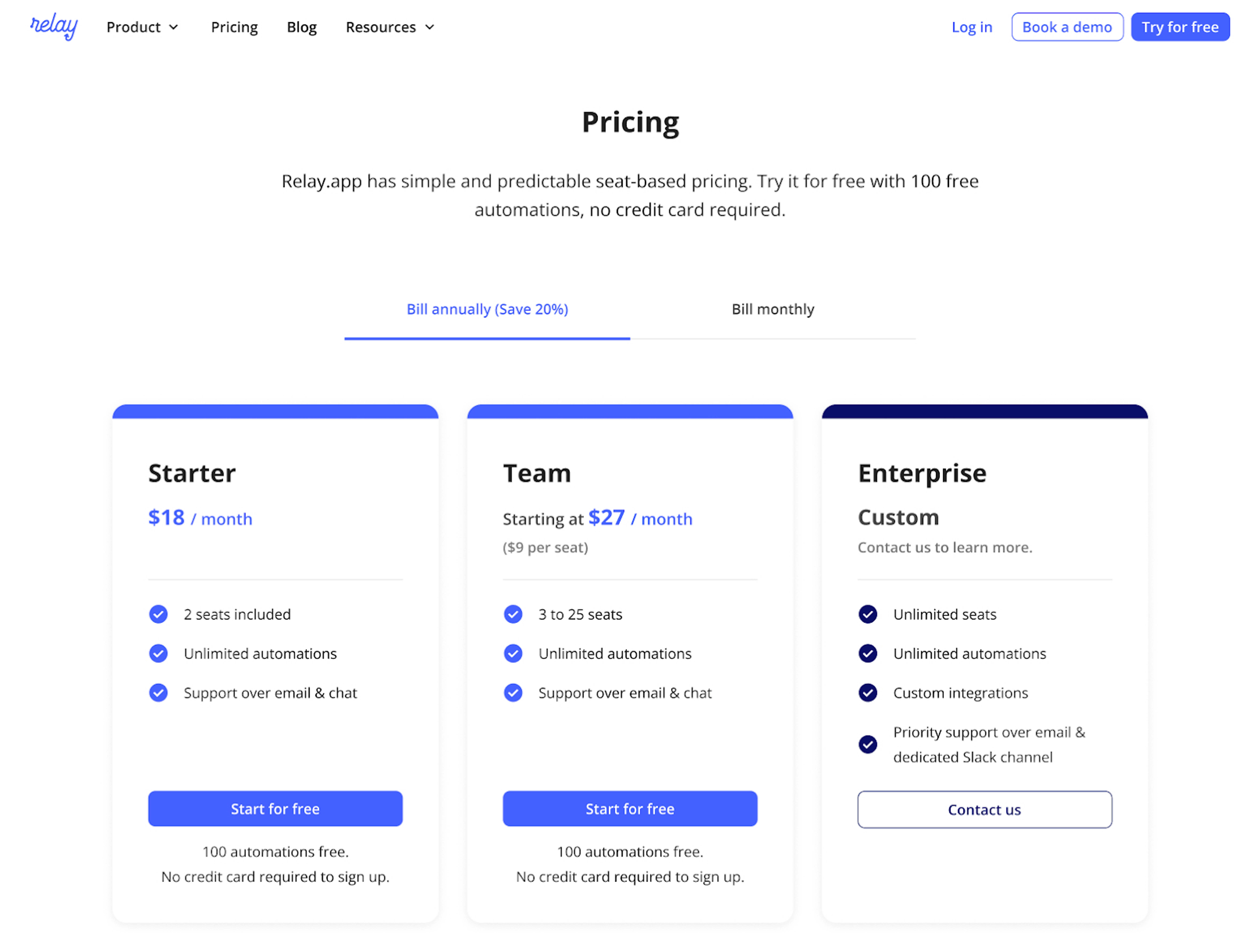
How Does Relay.app Compare to Bardeen?
You can use Bardeen to automate processes that involve scraping content from websites (the tool’s primary use case), which Relay.app doesn’t have at the moment.
However, when it comes to workflow creation and automation, Relay.app has an edge over Bardeen.
With Relay.app, you can:
- Reliably kick-off workflows even when you’re not looking at them.
- Build and run workflows with your team.
- Add human steps as part of your workflows.
Pros and Cons
✅ Better support for multiplayer workflows.
✅ Easier to integrate with AI.
✅ Transparent pricing with all of Relay.app’s features included across tiers.
❌ Being a new tool, it has fewer integrations (we’re adding new integrations regularly).
2. Qntrl
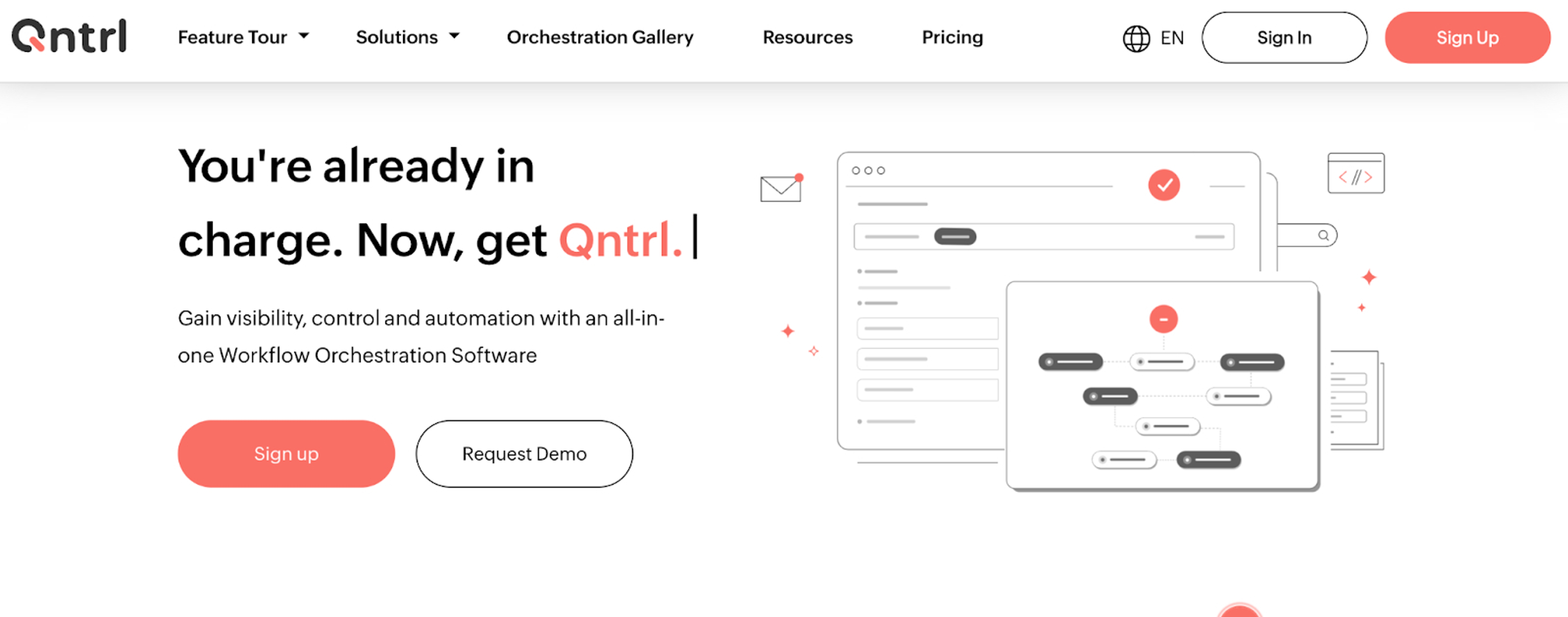
Qntrl helps organizations streamline operations, boost productivity, and gain better control over their business workflows.
Features
- Automate repetitive tasks based on conditional operators to save significant time and resources.
- Set up automated rules and checks to ensure compliance with regulations. This is especially helpful for businesses in highly regulated industries.
- Built-in reporting and analytics allow businesses to track progress and identify areas for improvement.
- Automatic document generation helps create essential documents like purchase orders, customer invoices, or offer letters in just a few clicks.
Pricing
Qntrl offers just one plan that costs $8 per user per month.
You can try the platform for 15 days and decide if it's the right fit.

Pros and Cons
✅ Save time by automating tasks, centralizing workflows and improving collaboration.
✅ Built-in reporting and analytics provide valuable insights into workflow performance so you can make changes.
❌ Setting up workflows and automation within Qntrl requires some learning.
❌ Once workflows are built within Qntrl, migrating them to another platform is a challenge.
3. Workato
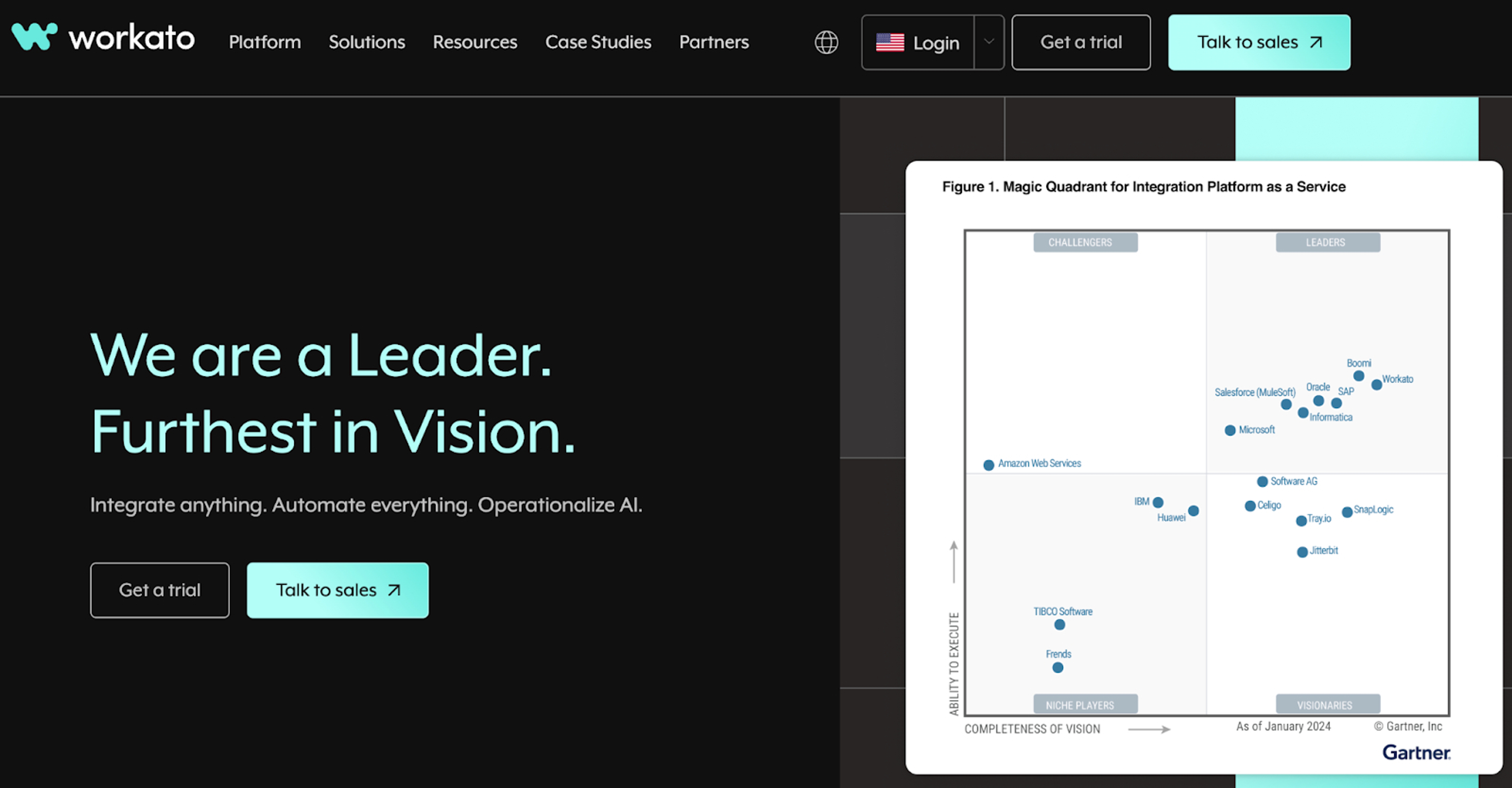
Workato is an automation platform built to help IT teams automate workflows, improve data accuracy, gain control over processes, and boost overall efficiency.
Features
- Provides a centralized platform for managing integrations and workflows. This makes it easier to identify bottlenecks and optimize operations.
- Comes with features like data cleansing and enrichment, event lead capture, multi-touch attribution, lead management and routing, and much more.
- It can handle complex integrations and high-volume data flows.
Pricing
Although offering a free trial, Workato doesn’t reveal its pricing on the website.
You can contact the sales team to learn more.
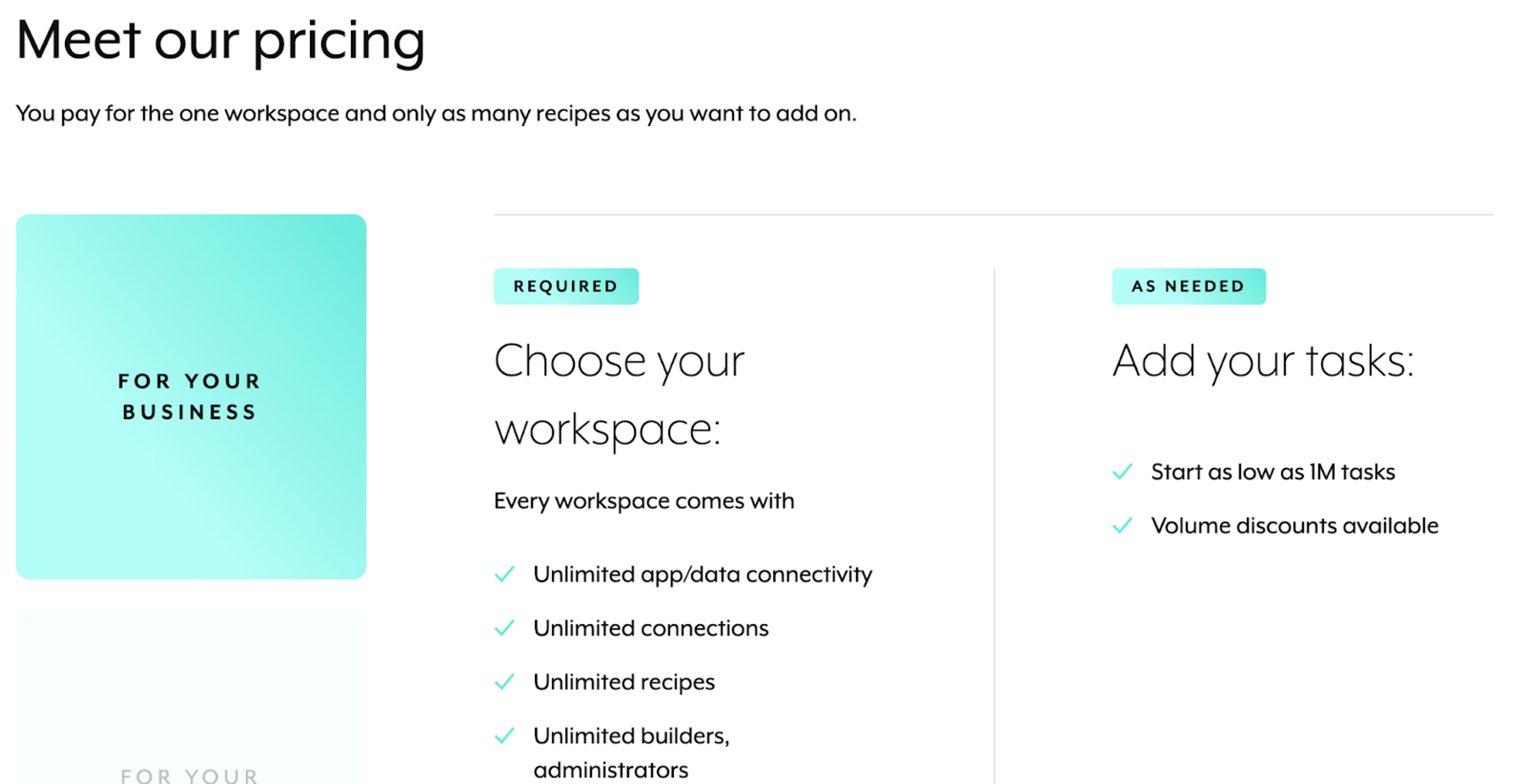
Pros and Cons
✅ A major advantage of Workato is its vast library of pre-built connectors for various cloud-based applications and on-premise systems.
✅ Workato excels at automating repetitive tasks across departments and increasing your team's productivity to focus on more strategic work.
✅ Can handle complex integrations, high-volume data flows, and future growth.
❌ Workato is built for IT teams, not for individuals to automate their own (or their team’s) processes.
4. Cheat Layer

Cheat Layer helps you solve tough business automation problems using a multi-modal model, Atlas-1, and a customer-trained GPT-4.
They claim to solve business automation problems that even giants like Ui Path and Microsoft couldn’t.
Features
- Lets you build end-to-end automation as though you’re just having a conversation with an engineer.
- Claims to have a targeting strategy in place that’s more robust than any other Robotic process automation (RPA) tool on the market.
- Get unlimited free autoresponding using Cheat Layer’s relevance graph on websites, CRMs, and support platforms.
- Automate any manual tasks with an action recorder and no-code drag-drop interfaces.
Pricing
Cheat Layer offers a risk-free 60-day trial with a money-back guarantee.
It has two paid plans to choose from:
- Workflow Automation: $19 - $499 per month
- Enterprise: Custom pricing

Pros and Cons
✅ The core functionality is available through a free Chrome extension.
✅ Leverages advanced AI algorithms and machine learning capabilities to create automations.
❌ The free Chrome extension might not offer all the functionalities available through the paid developer API.
5. Make
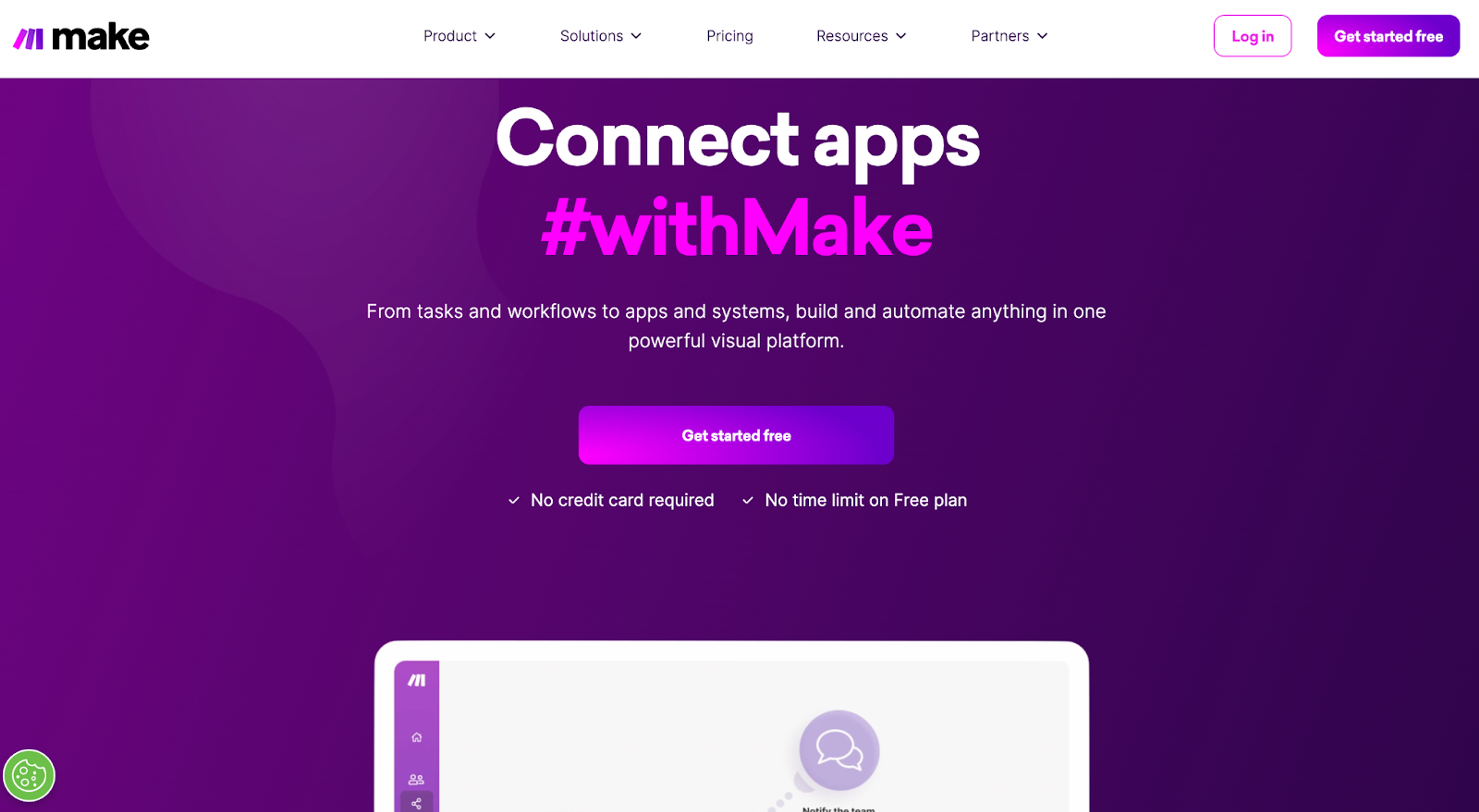
Make is a popular no-code workflow platform that lets you visually create, build, and automate tasks without limits.
Features
- Comes with a drag-and-drop feature to build workflows or automate existing ones.
- Make comes with a template library of thousands of free automation templates. Import the templates, customize them to match your workflows, and execute with ease.
- Lets you choose from thousands of pre-built apps. You can also connect to any public API with Make’s HTTP app.
- Assign permission and roles to your team, onboard them on Make, and create workflows together.
Pricing
Make offers a free plan that lets you execute 1,000 operations monthly.
But if you want to increase the ops limit and get access to some premium features, you can subscribe to any of Make’s paid plans:
- Core: $10.59 - $1,162 per month
- Pro: $18.82 - $1,620 per month
- Team: $34.12 - $9,683 per month
- Enterprise: Custom pricing

Pros and Cons
✅ User-friendly drag-and-drop interface makes building automation easy for non-technical users.
✅ Goes beyond simple automation with features like data manipulation, conditional logic branching, and loops, allowing for complex workflow creation.
❌ Has a time limit of 40 minutes for each run.
6. PixieBrix
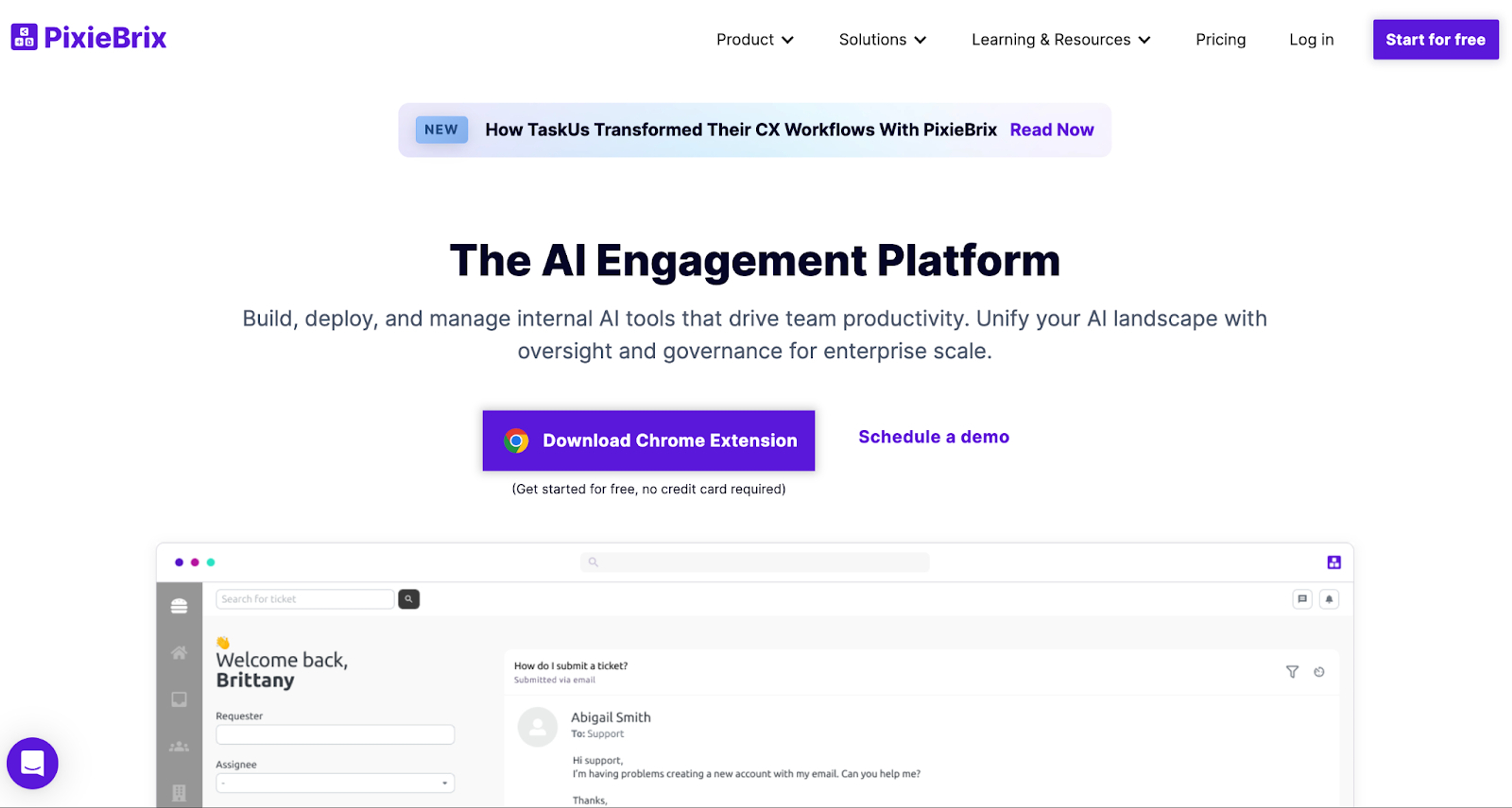
PixieBrix adds automation, integrations, collaboration, and AI to web apps that you already use.
It’s a low-code platform trusted by brands like Samsung, TaskUS, Builtin, and more.
Features
- Lets you extract data from a page, collect input from users, transform data, integrate with third-party API, and do much more with the help of starter bricks.
- Has a sleek visual interface with pre-built bricks to achieve customization and automation.
- Integrates with various web applications like SaaS platforms.
- Deploy your workflows in a few clicks; no DevOps engineer is required.
Pricing
PixieBrix offers a free plan that lets you onboard up to 5 users and offers basic features.
For more users and access to premium features, choose from two paid plans:
- Business: $40 per month per developer + $20 per month per user
- Enterprise: Custom pricing
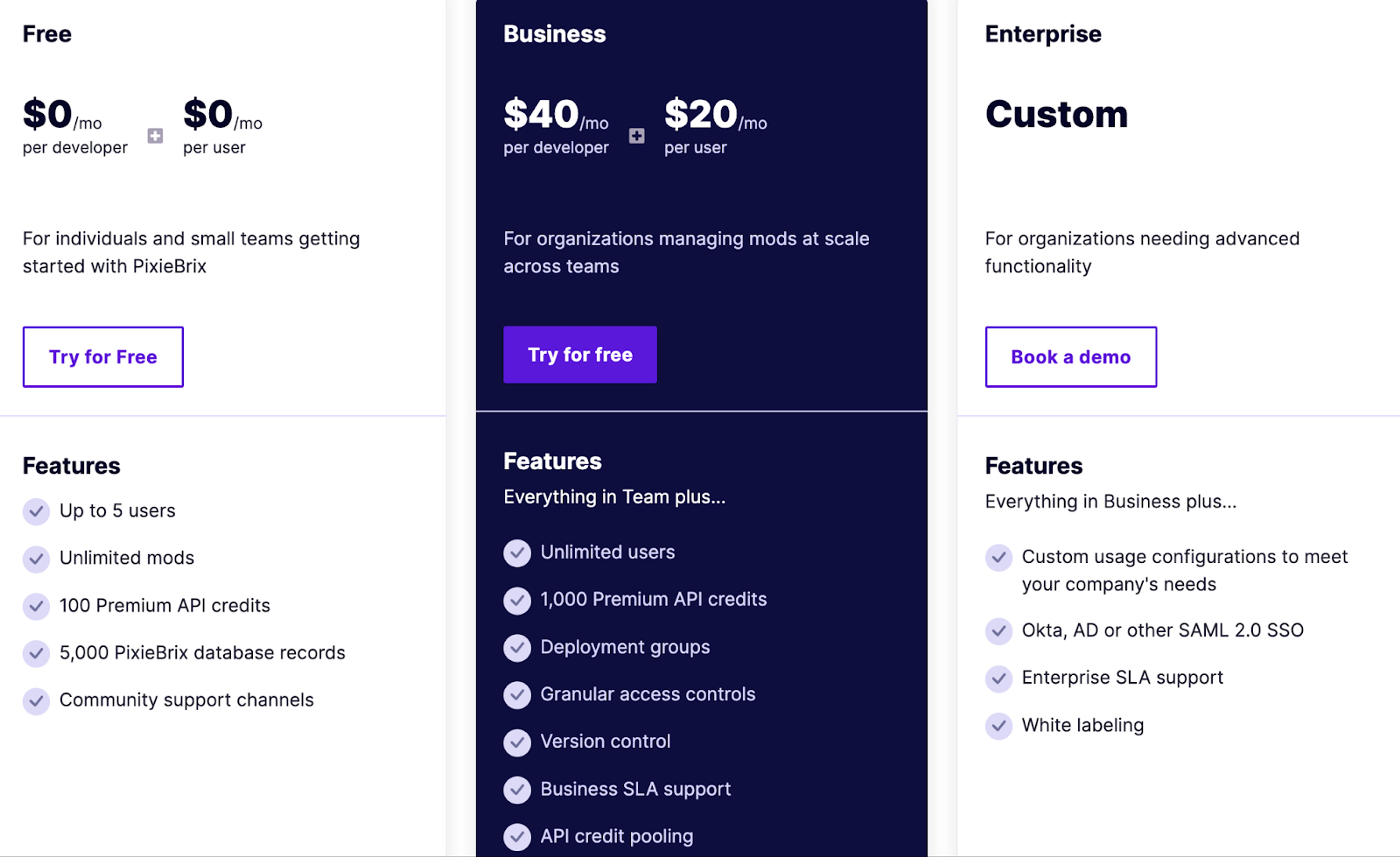
Pros and Cons
✅ Increase efficiency by personalizing your work environment and automating simple tasks.
✅ Lets you test workflows on web applications before a full-fledged deployment.
❌ The free plan might limit the number of ‘bricks’ or customizations allowed. This might be a problem when testing the platform before committing to a paid plan.
7. Integrately
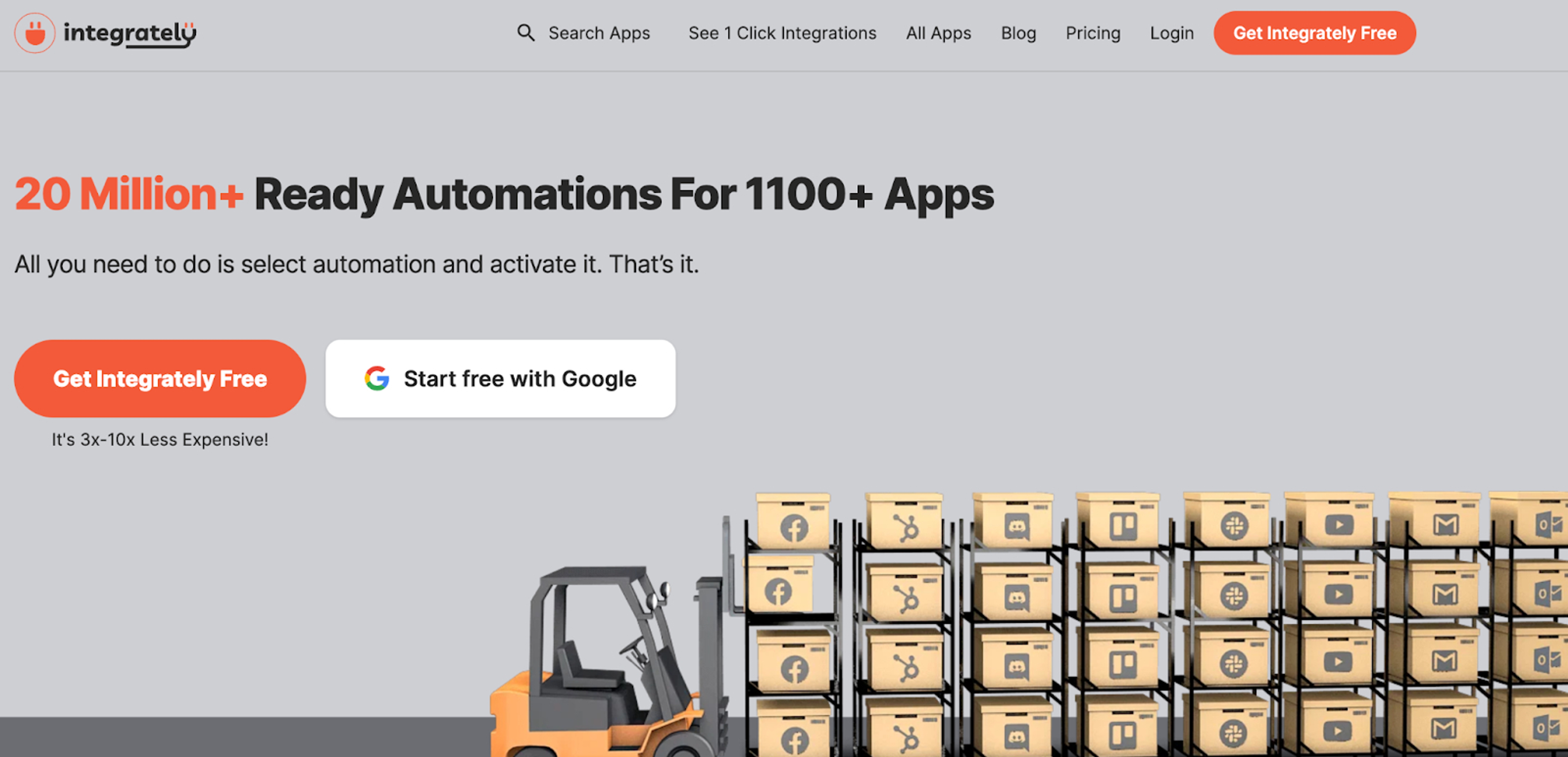
Integrately saves businesses time and money by automating repetitive tasks across different applications, boosting efficiency, and ensuring data accuracy.
It has one of the largest libraries of pre-built connectors.
Features
- Pre-built automation allows non-technical users to automate workflows without coding.
- Boasts a vast library of pre-built connectors, potentially one of the largest among workflow automation tools.
- Has a web-based interface to help you design, document, and test APIs.
- Adapts to businesses of all sizes. You can start with simple automation for a small team and gradually scale up to handle complex workflows and high-volume data flows.
Pricing
Integrately offers a free plan with 100 tasks, 5 automations, and several features.
The plan’s great for testing the software, but if you want to create multiple automations, you must choose from one of the four paid plans:
- Starter: $29.99 per month
- Professional: $49 per month
- Growth: $124 per month
- Business: $299 per month

Pros and Cons
✅ Integrates with 500+ apps, allowing you to create complex workflows with ease.
✅ Lets you monitor workflows, track execution history, and spot errors.
❌ Getting the right data sample when working on a flow is sometimes tricky.
8. Kissflow

Kissflow is a low-code platform that automates workflows for multiple personas – IT, developers, process owners, and business users.
Features
- Drag-and-drop builder to design forms in minutes.
- Build the perfect sequence of actions with parallel branches, conditional steps, and more.
- Comes with a conditional logic feature that lets you create rules that are triggered based on the user journey.
- Lets you permit who can start the workflow and what data users can see or edit at each step.
Pricing
Kissflow has two pricing options to choose from:
- Basic: $1,500 per month
- Enterprise: Custom pricing

Pros and Cons
✅ Has a short learning curve, making it easy for non-technical people to build workflows.
✅ It provides a central platform where teams can collaborate on tasks, share documents, and communicate in real-time.
❌ Kissflow has no free trial and is expensive.
9. Rindle
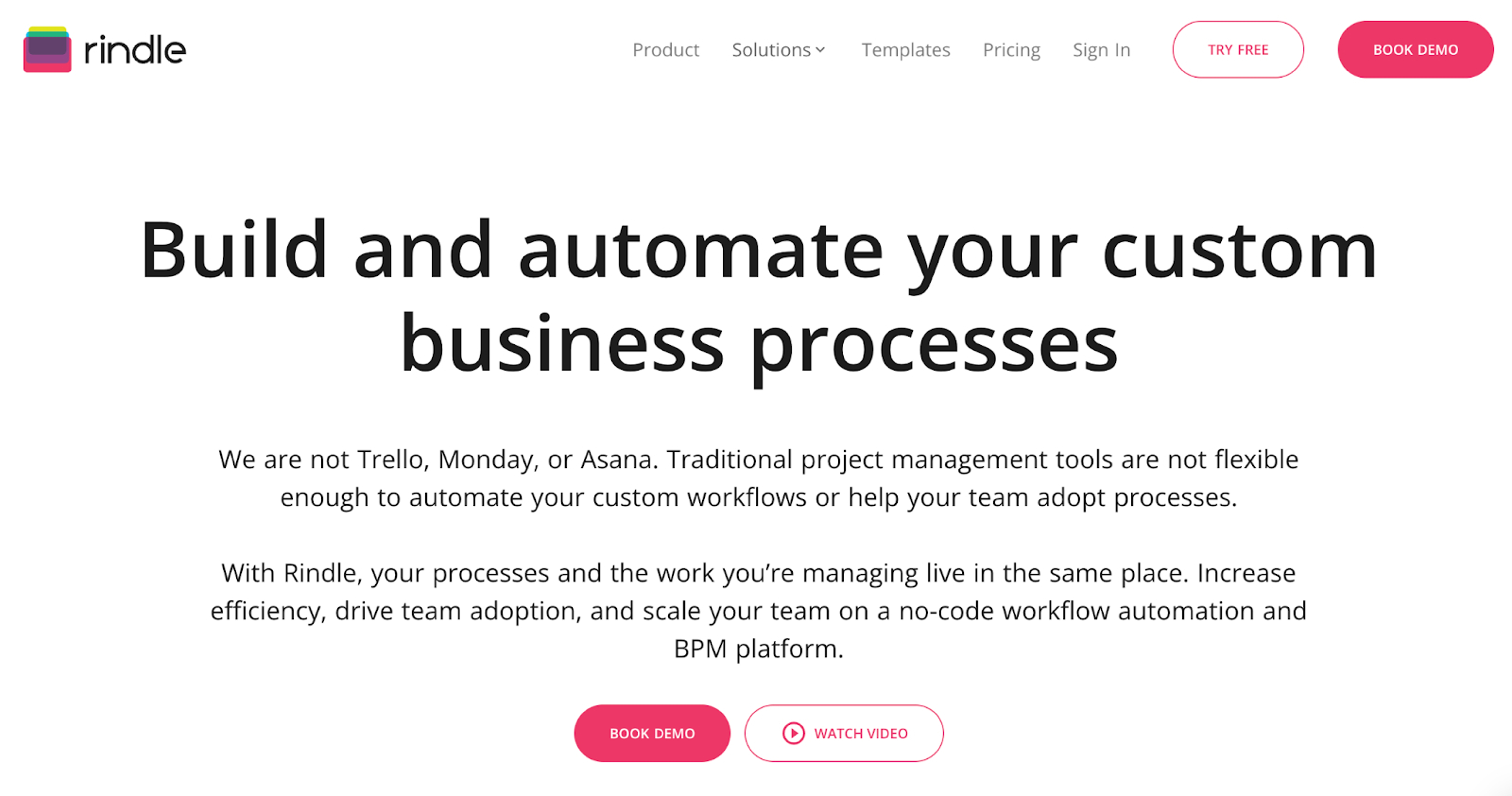
Rindle is a workflow management platform designed for busy managers and teams.
The tool merges task management with workflow creation. You can handle processes and the work you’re managing live, on the same platform.
Features
- Build workflows from scratch or choose a pre-built template from Rindle’s library.
- Fully customize workflow visualization to suit your business’s needs and preferences. Add elements like Kanban boards, lists, Gantt charts, etc.
- Leverage AND/OR logical operators to keep your processes moving forward without relying on humans.
- Custom data fields allow you to view tasks and project-specific data as intended.
Pricing
There are two plans Rindle offers, and both have a 14-day trial you can opt for.
- Professional: $12 per user per month
- Business: $25 per user per month
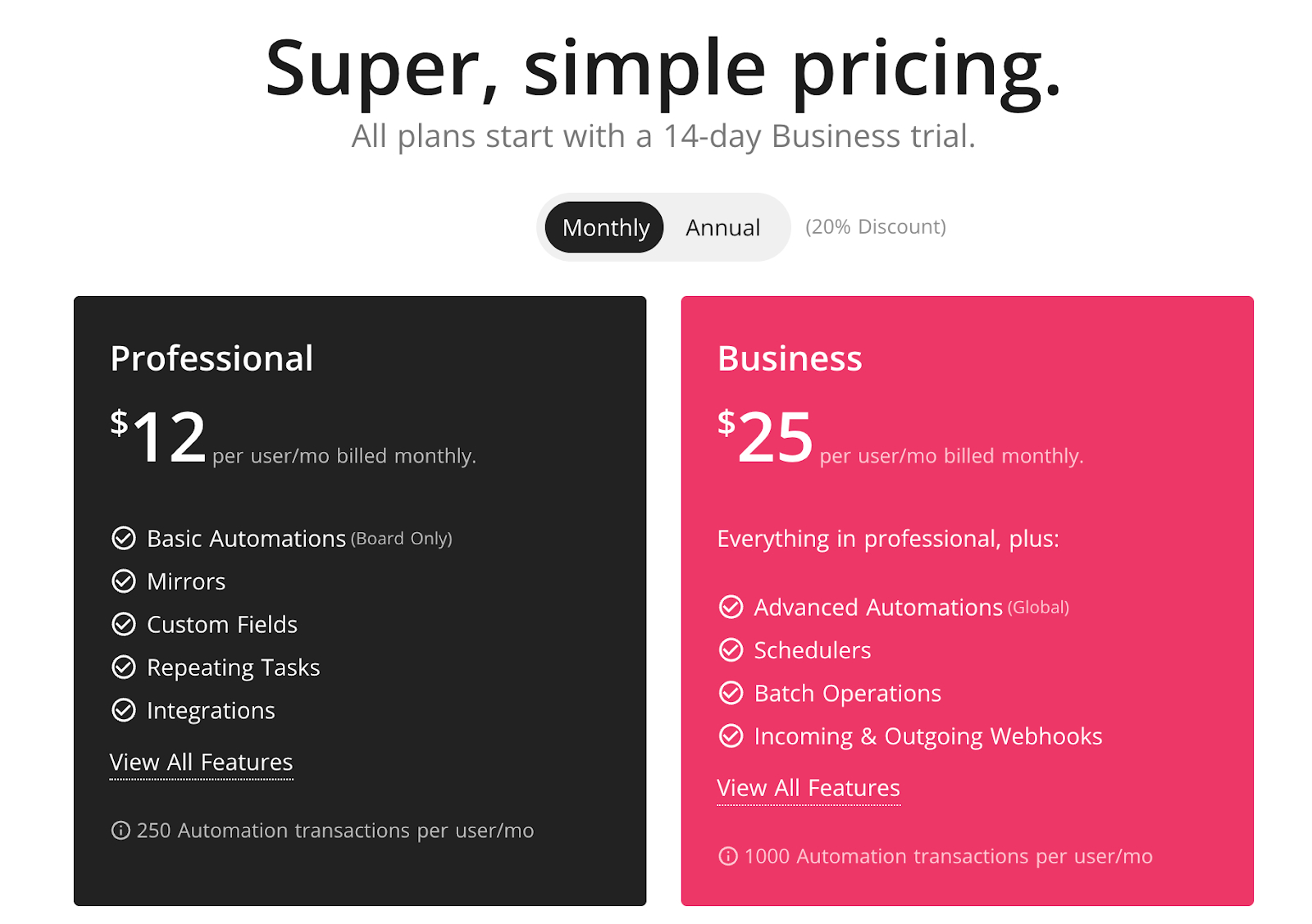
Pros and Cons
✅ Lets you synchronize and manage several projects at the same time.
✅ User-friendly tool that lets you assign tasks, set deadlines, and track progress visually to ensure accountability, meet deadlines, and keep projects on track.
❌ When compared to its competitors, Rindle lacks a mobile version of the platform.
10. Cflow
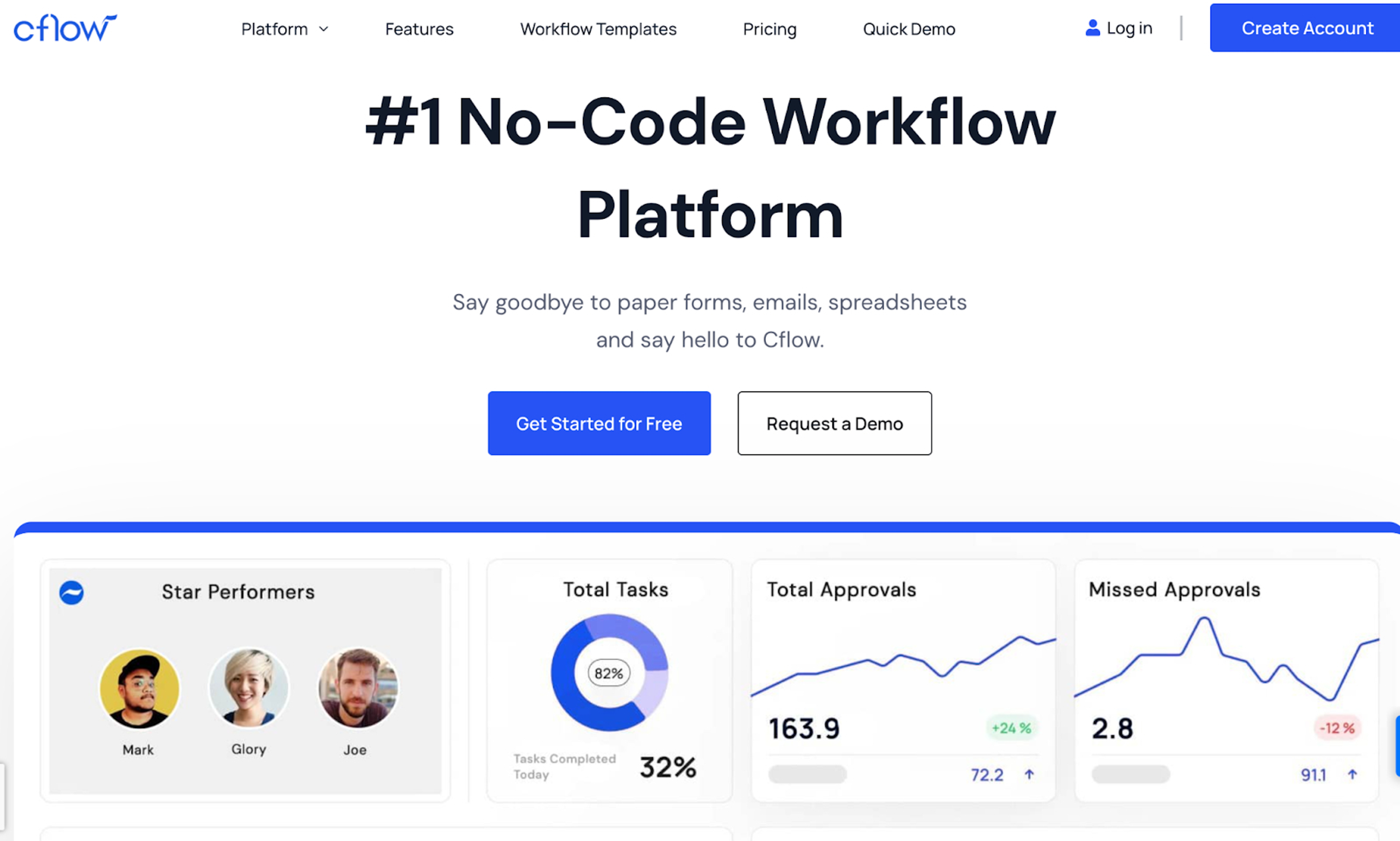
Cflow is a no-code workflow automation tool that businesses use to switch from spreadsheet and email-based management to a business application.
No matter how small or big your business is, you can use Cflow at any stage.
Features
- Provides a visual workflow builder for designing, optimizing, and managing workflows. The builder lets you find bottlenecks, streamline processes, and ensure smooth operation for better outcomes.
- Lets you configure rules so your workflows can be auto-approved and run without human intervention.
- The ability to customize your forms at each stage of a process is a key differentiator in Cflow.
- Comes with a Business Activity Monitor (BAM) that gives you insights on process cycle time, bottlenecks, and process efficiency.
Pricing
Cflow offers three paid plans to choose from:
- Happy: $12 per user per month
- Joy: $16 per user per month
- Bliss: $22 per user per month

Pros and Cons
✅ Cflow is a highly customizable software.
✅ The user interface is simple, and the features are not cluttered.
❌ The platform can get a little slow during data transfers, especially for large datasets.
Create Next Gen Workflow Automations with Relay.app
The products listed above are all tried and tested Bardeen alternatives you can use to create amazing workflows and automate them at scale.
How do you find out which Bardeen alternative is the right one for you?
The best way is to give them a try and judge for yourself.
If you’re short on time, sign up for Relay.app’s free trial and set up workflows (like this one) in minutes.
